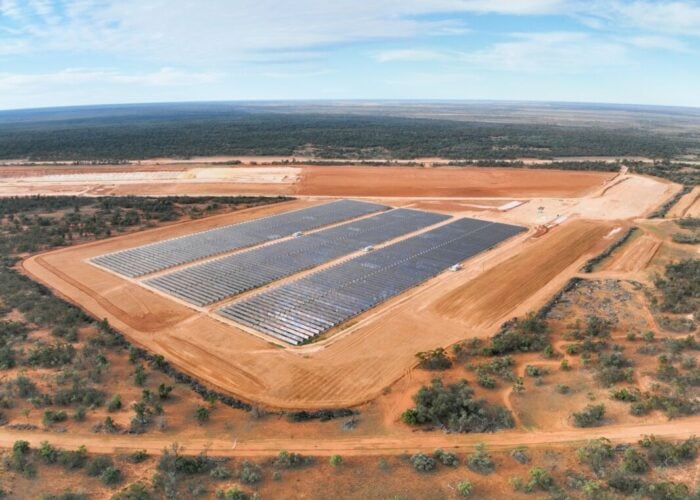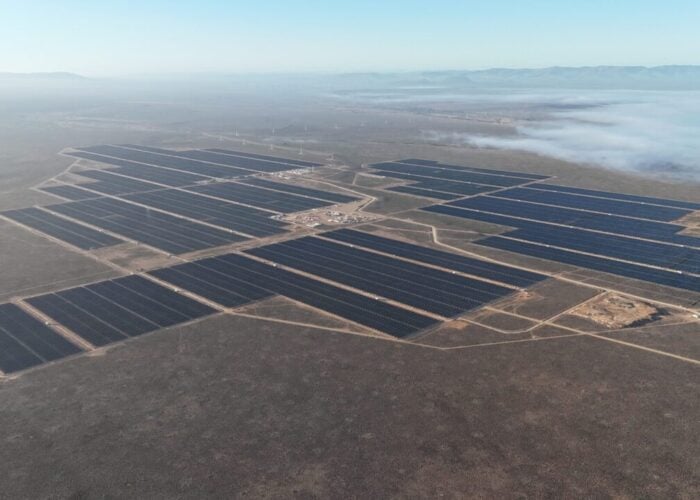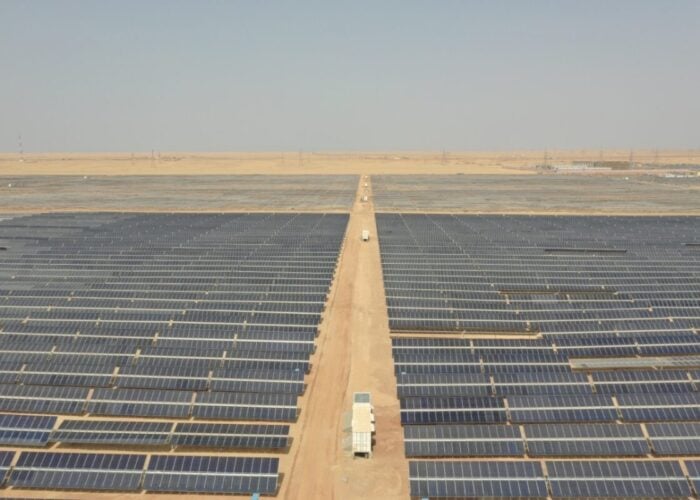
| Project Name | Location | Capacity |
|---|---|---|
| Sirius and Dyason’s Klip 1 and 2 (also known as the Upington solar complex) | Upington, South Africa | 258MW in total (spread between three 86MW projects) |
By Catherine Early
On 10 April 2020, South Africa’s biggest solar PV complex to date sprang into operation as the final phase was completed. The timing was extremely fortunate, just a day ahead of the country’s government announcing a nationwide lockdown as the COVID-19 pandemic continued to spread worldwide.
Try Premium for just $1
- Full premium access for the first month at only $1
- Converts to an annual rate after 30 days unless cancelled
- Cancel anytime during the trial period
Premium Benefits
- Expert industry analysis and interviews
- Digital access to PV Tech Power journal
- Exclusive event discounts
Or get the full Premium subscription right away
Or continue reading this article for free
The company behind the 258MW operation, Norway-based Scatec Solar, has had a presence in South Africa for the past decade, and the three-phased complex in Upington is its fourth project. South Africa has procured 1.5GW of solar power generation since the government introduced the Renewable Energy Independent Power Procurement Programme (REIPPPP) in 2011. Scatec Solar has won contracts for solar projects in the first, second and fourth round of the programme.
It signed power purchase agreements for the 258MW projects in Upington, in the Northern Cape, on 5 April 2018. The company has been the engineering, procurement and construction provider for the projects, and will provide operation and maintenance, as well as asset management services to the power plants.
The completion of the Upington projects brings Scatec Solar’s total operational capacity in South Africa to 448MW, making it the leading player in the solar sector in the country. The project increased the company’s asset base by 60 per cent.
The government designed the programme very carefully to avoid problems that had been experienced in other countries, explains Jaco Uys, senior project manager at Scatec Solar. “There are a lot of legal documents to make sure that the framework for all the parties is very well defined. That provided overseas investors with enough comfort to come into the country and invest, and Scatec Solar was one of those.
“The REIPPPP is a fairly onerous process, but it’s been successful to a large degree because of that. All projects have to meet strict conditions on employing local people, using equipment built domestically, labour rights and environmental issues,” Uys says.
Employment and environmental protection
Projects must have environmental authorisation before they are allowed into the bid programme, he says. Authorisation covers flora, fauna and water use issues. Both the owner of the site and the builder employ their own officers to ensure that environmental conditions are met. The environmental compliance officer (ECO) reports to the environmental site agent (ESA), employed by the owner.
Considering the arid nature of the project’s location, water use was the biggest environmental concern for the Upington project, Uys explains, and the company installed a water meter which was regularly monitored by the ECO to ensure it did not exceed the amount of water permitted under its licence. It also had to construct a type of culvert bridge as one of the access roads to the site crossed a minor watercourse.
The project site is in a semi-desert area, and did not involve major earthworks or disturbance, so there were no particular issues with wildlife, Uys says. There was potential for snakes and scorpions to be found on site, so Scatec Solar trained a couple of site staff as snake handlers to catch any snakes and release them on adjacent properties. This happened “a couple of times”, Uys says. A bat-eared fox den was also found on the land portion, and construction ceased in the area to allow the animals freedom of movement.
In terms of complying with local employment obligations, Scatec Solar was easily able to recruit all the labour it needed from the local area, Uys says. “Constructions of these facilities always require a large amount of labour and it was therefore relatively easy for the project to achieve the numbers committed to,” he says.
“It was also extremely important for the project to ensure that actual economic development objectives figures met or exceeded the tender numbers committed to, as these numbers are audited by the Department of Mineral Resources and Energy, as well as the Independent Power Producer (IPP) Office. If they are not achieved, it leads either to significant penalties, or in the case of repeated transgressions, possible termination,” Uys explains.
The company worked with local representatives to create a local community forum to ensure a consistent, clear, and fair process of engagement with local people, Uys says. The company will have a 20-year relationship with the community, and so wanted to create an avenue to resolve disputes, he explains.
“It was quite difficult to get the forum established; it took a while to get buy-in from the community. But the moment that it was established things became a lot easier, so for us, that was a lesson learned and, in the future, we will do the same thing,” he says.
The company is committing to operate in line with the Equator Principles and the IFC’s Environmental and Social Performance Standards to ensure consistent practices across all projects.
“The focus of our socio-economic and environmental programmes and development mainly includes access to energy, capacity building, health and education. Over the entire lifetime of the project, a percentage of quarterly revenue is dedicated to development for all our solar plant. This work is supported by local community liaison officers, who are on-the ground resources for the company,” Uys adds.
This is an extract of an article first published in Volume 23 of PV Tech Power. The full article can be read here, or in the full digital copy of PV Tech Power 23, which can be downloaded for free here.






